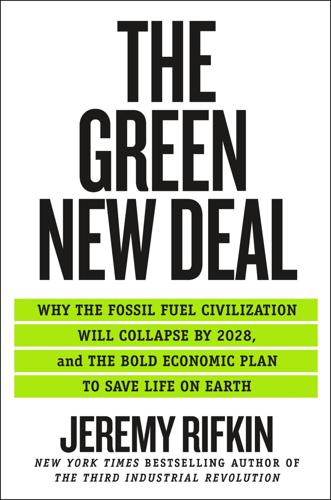
The Green New Deal: Why the Fossil Fuel Civilization Will Collapse by 2028, and the Bold Economic Plan to Save Life on Earth
by
Jeremy Rifkin
Published 9 Sep 2019
Kevin Muldoon-Smith and Paul Greenhalgh, “Understanding Climate-related Stranded Assets in the Global Real Estate Sector,” in Stranded Assets and the Environment: Risk, Resilience and Opportunity, ed. Ben Caldecott (London: Routledge, 2018), 154; Kevin Muldoon-Smith and Paul Greenhalgh, “Suspect Foundations: Developing an Understanding of Climate-Related Stranded Assets in the Global Real Estate Sector,” Energy Research & Social Science 54 (August 2019): 62. 41. M. J. Kelly, Britain’s Building Stock—A Carbon Challenge (London: DCLG, 2008). 42. Ben Caldecott, “Introduction: Stranded Assets and the Environment,” in Caldecott, Stranded Assets and the Environment, 6. 43.
…
Navigant Research, Transportation Forecast: Light Duty Vehicles, 2017, https://www.navigantresearch.com/reports/transportation-forecast-light-duty-vehicles (accessed March 24, 2019). 12. Burns, “Sustainable Mobility,” 182. 13. Gunnela Hahn et al., Framing Stranded Asset Risks in an Age of Disruption, Stockholm Environment Institute, February 14, 2018, https://www.sei.org/publications/framing-stranded-assets-age-disruption/ (accessed March 24, 2019), 31. 14. Colin McKerracher, Electric Vehicles Outlook 2018, BloombergNEF, https://about.bnef.com/electric-vehicle-outlook/ (accessed January 16, 2019). 15. Ibid. 16. Ibid. 17. Ibid.; Hahn et al., Framing Stranded Asset Risks in an Age of Disruption, 12. 18. Henbest et al., New Energy Outlook 2018. 19.
…
According to a November 2018 study by Lazard—one of the world’s largest independent investment banks—the levelized cost of energy (LCOE) of large solar installations has plummeted to 36 dollars/megawatt hour, while wind has fallen to 29 dollars/megawatt hour, making them “cheaper than the most efficient gas plants, coal plants, and nuclear reactors.”16 “LCOE is an economic assessment of the average total cost to build and operate a power-generating asset over its lifetime divided by the total energy output of the asset over that lifetime.”17 Within the next eight years, solar and wind will be far cheaper than fossil fuel energies, forcing a showdown with the fossil fuel industry.18 The Carbon Tracker Initiative, a London-based think tank serving the energy industry, reports that the steep decline in the price of generating solar and wind energy “will inevitably lead to trillions of dollars of stranded assets across the corporate sector and hit petro-states that fail to reinvent themselves,” while “putting trillions at risk for unsavvy investors oblivious to the speed of the unfolding energy transition.”19 “Stranded assets” are all the fossil fuels that will remain in the ground because of falling demand as well as the abandonment of pipelines, ocean platforms, storage facilities, energy generation plants, backup power plants, petrochemical processing facilities, and industries tightly coupled to the fossil fuel culture.

Green Swans: The Coming Boom in Regenerative Capitalism
by
John Elkington
Published 6 Apr 2020
See also: https://medium.com/@AlexSteffen/predatory-delay-and-the-rights-of-future-generations-69b06094a16. 45.Myles McCormick, “Bayer to invest €5bn in alternative weedkillers,” Financial Times, June 14, 2019.See also https://www.ft.com/content/e3b985ea-8e73-11e9-a1c1-51bf8f989972. 46.Leslie Hook, “Energy groups to be sued over climate change,” Financial Times, June 10, 2019. 47.Steffen, “Predatory Delay.” 48.The dam was a joint venture between Vale and BHP Billiton. 49.Lena Lee, “Carlos Ghosn: From Private Jet to 108 Days in Jail to His Rearrest,” Bloomberg, March 6, 2019. See also: https://www.bloomberg.com/news/articles/2019-03-06/from-private-jet-to-108-days-in-jail-carlos-ghosn-timeline. 50.https://su.org 51.https://leadersquest.org 52.http://lexicon.ft.com/ 53.“Stranded Assets,” Carbon Tracker, August 23, 2017. See: https://www.carbontracker.org/terms/stranded-assets/. 54.“Stranded Assets.” CHAPTER 2 1.See the “Gradually, Then Suddenly” section of this chapter. 2.I have been very much influenced by Exponential Organizations: Why New Organizations Are Ten Times Better, Faster, and Cheaper Than Yours (And What to Do About It) by Salim Ismail, with Michael S.
…
One approach more innovative organizations are now taking is to expose their leadership teams to emerging and potentially exponential opportunities through participation in courses offered by the likes of Singularity University50 or the learning journeys offered by the likes of Leaders’ Quest.51 If your top team has yet to dip its toes into exponential waters, maybe it is time to give it a go. 10. STRANDED ASSETS Some of the most important work in the world is done, and some of the most important new business concepts and language are introduced by, not-for-profit organizations. One of my favorites has been the Carbon Tracker Initiative. Among other things, they repurposed the concept of stranded assets to get people thinking about the structural implications of global warming for our economies and for particular industry sectors and companies. Such market activism is likely to transform company and industry sector valuations in the coming decade, with huge implications for business leaders, investors, and those whose careers, tax revenues, or pensions are increasingly at risk.
…
Take oil tankers, which risk losing almost a third of their value when the shift to green energy gains real momentum.75 Today’s $160 billion tanker market would see a rising tide of stranded assets, with few other cargos available to fully replace fossil fuels. All of this was predicted. One interviewee for our Green Swan Day film was Mark Campanale, a co-founder of the Carbon Tracker Initiative. He conceived of the “unburnable carbon” capital markets thesis, outlined in his 2011 report, Unburnable Carbon–Are the World’s Financial Markets Carrying a Carbon Bubble?76 His answer: They are. While some investors fret about stranded assets, tougher souls look for “cockroach stocks,” businesses that can survive no matter what happens!

This Changes Everything: Capitalism vs. The Climate
by
Naomi Klein
Published 15 Sep 2014
And yet climate experts tell us that if we want to have a shot at keeping warming below 2 degrees Celsius, then developed country economies need to have begun their energy turnaround by the end of this decade and to be almost completely weaned from fossil fuels before 2050.52 If the companies have miscalculated and we do get serious about leaving carbon in the ground, these huge projects will become what is known as “stranded assets”—investments that lose their projected value as a result of, for example, dramatic changes in environmental policy. When a company has a great deal of expensive stranded assets on its books, the stock market takes notice, and responds by bidding down the share price of the company that made these bad bets. This problem goes well beyond a few specific projects and is integrated into the way that the market assigns value to companies that are in the business of extracting finite resources from the earth.
…
They tell us that getting serious about climate change, which means cutting our emissions radically, is simply not compatible with the continued existence of one of the most profitable industries in the world. And the amounts of money at stake are huge. The total amount of carbon in reserve represents roughly $27 trillion—more than ten times the annual GDP of the United Kingdom. If we were serious about keeping warming below 2 degrees, approximately 80 percent of that would be useless, stranded assets. Given these stakes, it is no mystery why the fossil fuel companies fight furiously to block every piece of legislation that would point us in the right emissions direction, and why some directly fund the climate change denier movement.58 It also helps that these companies are so profitable that they have money not just to burn, but to bribe—especially when that bribery is legal.
…
Indeed the day the Copenhagen summit concluded—when the target was made official—the share prices of some of the largest fossil fuel companies hardly reacted at all.61 Clearly, intelligent investors had determined that the promises governments made in that forum were nothing to worry about—that they were not nearly as important as the actions of their powerful energy departments back home that grant mining and drilling permits. Indeed in March 2014, ExxonMobil confirmed as much when the company came under pressure from activist shareholders to respond to reports that much of its reserves would become stranded assets if governments kept promises to keep warming below 2 degrees by passing aggressive climate legislation. The company explained that it had determined that restrictive climate policies were “highly unlikely” and, “based on this analysis, we are confident that none of our hydrocarbon reserves are now or will become ‘stranded.’ ”62 Those working inside government understand these dynamics all too well.
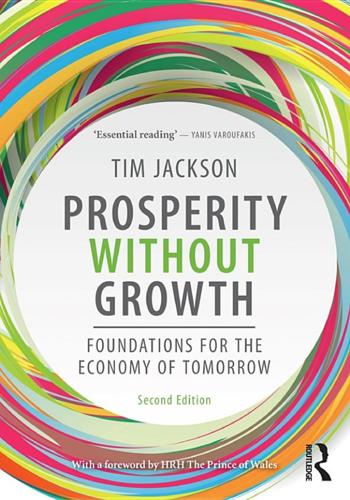
Prosperity Without Growth: Foundations for the Economy of Tomorrow
by
Tim Jackson
Published 8 Dec 2016
One suggestion is that unconstrained investment is insufficiently responsive to risk, so that future revenues are undermined by unforeseen environmental or social factors. In this case, constraints on investment can stimulate positive impacts in terms of return, against the conventional logic.16 This argument has drawn support from the debate over ‘stranded assets’. The policy and economic risks associated with certain fossil fuel companies – particularly coal – are so high, argue proponents, that assets held in such companies are at risk of becoming worthless (or ‘stranded’) within the foreseeable future. Divesting such assets makes economic as well as ethical sense.17 Whatever the reason, it is clear that there are some distinct advantages to a more active ‘stewardship’ approach to investment.
…
Quotes are taken from Kallis (2015). 8 See Kallis (2015). 9 Keynes (1930). 10 See, for example, Füchs (2015), NCE (2014), Pauli (2010), UNEP (2011); see also www.oecd.org/greengrowth/oecdworkongreengrowth.htm (accessed 24 April 2016). 11 Daly (1977: 119). 12 Sandel (2013). 13 For an entertaining vision of such a world, see Porritt (2013). 14 See www.triodos.com/en/investment-management/who-we-are/growth/ (accessed 7 April 2016). 15 NCE (2014), UNEP (2011). 16 Responding to the UK Law Commission, in 2014, the Association of British Insurers wrote: ‘Research continues to demonstrate that active stewardship and integration of [environmental, social and governance] factors within investment decisions can lead to improved risk-adjusted performance (Law Commission 2014: 97). 17 For instance, Carbon Tracker (2013). See also www.parliament.uk/documents/commons-committees/environmental-audit/Letter-from-Mark-Carney-on-Stranded-Assets.pdf (accessed 11 April 2016). 18 See, for example, Eurosif (2014). For an example of such outperforming funds, see www.alliancetrustinvestments.com/global/documents/3301/A-Guide-to-SRI (accessed 11 April 2016). 19 It’s been suggested that a declining EROI may be one factor that has contributed to secular stagnation.
…
The Patient Capital Collaborative – Field Study No. 3: A Field guide to Investment in a Regenerative Economy. New York: Capital Institute. Online at http://fieldguide.capitalinstitute.org/uploads/1/3/9/6/13963161/ppcepub.pdf (accessed 7 March 2016). Carbon Tracker 2013. ‘Unburnable Carbon: wasted capital and stranded assets’. London: Carbon Tracker. Online at www.carbontracker.org/wp-content/uploads/2014/09/Unburnable-Carbon-2-Web-Version.pdf (accessed 23 July 2016). Carbon Trust 2006. The Carbon Emissions in All That We Consume. London: Carbon Trust. Castel, D., C. Lemoine and A. Durand-Delvigne 2011. ‘Working in cooperatives and Social Economy: Effects on Job Satisfaction and the Meaning of Work’.
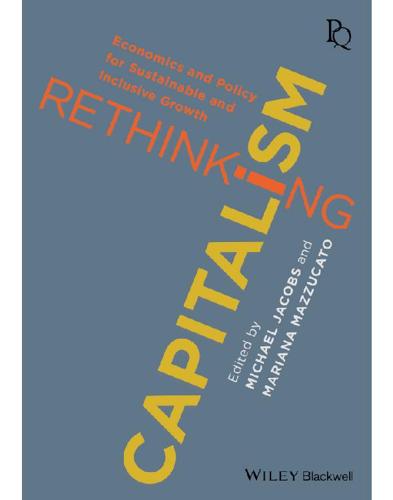
Rethinking Capitalism: Economics and Policy for Sustainable and Inclusive Growth
by
Michael Jacobs
and
Mariana Mazzucato
Published 31 Jul 2016
Perez, Technological Revolutions and Financial Capital: The Dynamics of Bubbles and Golden Ages, Cheltenham, Edward Elgar Publishing, 2003. 44 See J. Leaton, N. Ranger, R. Ward, L. Sussams, M. Brown et al., Unburnable Carbon 2013: Wasted Capital and Stranded Assets, Carbon Tracker and Grantham Research Institute on Climate and the Environment, London School of Economics. See also A. Ansar, B. Caldecott and J. Tilbury, Stranded Assets and the Fossil Fuel Divestment Campaign: What does Divestment Mean for the Valuation of Fossil Fuel Assets?, Stranded Assets Programme, Smith School of Enterprise and the Environment, University of Oxford, October 2013. 45 Global Commission on the Economy and Climate, Better Growth, Better Climate. 11.
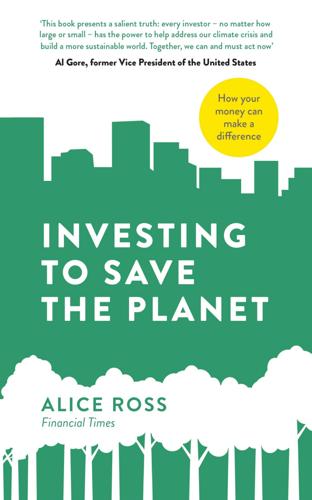
Investing to Save the Planet: How Your Money Can Make a Difference
by
Alice Ross
Published 19 Nov 2020
A 2015 report by Carbon Tracker examined the coal market in the US and found that, due to a combination of increased regulation and lower prices for alternative fuels such as renewables and shale gas, over two dozen coal companies had gone bankrupt in the previous three years, with others losing over 80 per cent of their share value. This doesn’t mean that divestment harmed coal companies’ share prices. But it does suggest that divesting is sometimes a financially sensible reaction. Oil and gas companies also have a specific regulation-driven nightmare: that of stranded assets. Companies like Exxon, BP and Shell are currently sitting on huge reserves of oil and gas, but government regulation aimed at keeping carbon emissions down could mean that they can never use them. A Financial Times analysis in February 2020 found that the value of these lost assets could be as high as $900bn – the equivalent of a third of the value of the big oil and gas companies.
…
‘The next 10 years are incredibly important as this is when we need to turn the corner – so the likelihood of regulatory intervention is quite high and the biggest stick that regulators wield is carbon pricing.’ For now, Schroders has built its own model of how to assess the climate risk of companies, including modelling how it would fare under a carbon tax, the impact of new technologies and the cost of stranded assets. ‘For a lot of people, climate change is a way of selling funds rather than an investment risk. For us, it is an unavoidable and potentially very disruptive risk we have to understand. It isn’t a marketing strapline.’ Climate change may also require financial markets to change the way they think about risk.

American Foundations: An Investigative History
by
Mark Dowie
Published 3 Oct 2009
The NRDC proposed that stranded assets-that is, generation or transmission systems that would be uneconomical in a competitive marketbe amortized, either directly by ratepayers or indirectly through a bond issued by a state trust. The proceeds of the bond issue would be used to retire the utility industry's $28-billion investment in nuclear and alternative-energy power plants. The bonds would be repaid over a ten-year period by a special assessment on consumers' energy bills. So, either way, the ratepayer was saddled with the stranded costs. California was an important early battleground over stranded assets, which nationwide are estimated at between $200 and $300 billion.
…
Instead, it created and funded a new organization called Project for a Sustainable Energy Policy, placing it under the management of an NRDC staffer and presenting it to FERC as the true voice of the national environmental movement. The new organization's position, forcefully stated, was that utilities nationwide should be allowed to pass the investment losses from stranded assets on to consumers. Another East Coast Energy Foundation grantee, who spoke on background for fear of losing his funding, described the role played by the Conservation Law Foundation-"a member of the Energy Foundation's brain trust"-during the FERC negotiations. "CLF's strategy," he recalls, "was to give the utilities stranded costs in exchange for a few small environmental improvements.
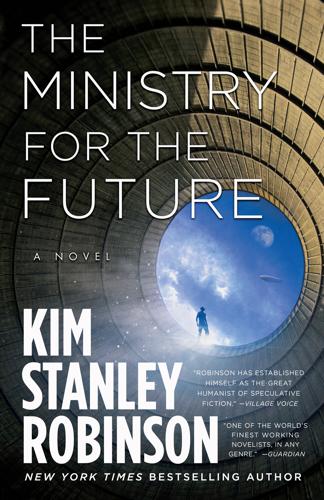
The Ministry for the Future: A Novel
by
Kim Stanley Robinson
Published 5 Oct 2020
Only about a quarter of this carbon is owned by private companies; the rest is in the possession of various nation-states. The notional value of the 2,500 gigatons of carbon that should be left in the ground, calculated by using the current price of oil, is on the order of 1,500 trillion US dollars. It seems quite possible that these 2,500 gigatons of carbon might eventually come to be regarded as a kind of stranded asset, but in the meantime, some people will be trying to sell and burn the portion of it they own or control, while they still can. Just enough to make a trillion or two, they’ll be saying to themselves— not the crucial portion, not the burn that pushes us over the edge, just one last little taking.
…
If the industry could be paid to do something with its tech to help in the current situation, all the better. The fossil fuel lawyers and executives looked interested when this was proposed to them. The privately owned companies saw a chance of escaping with a viable post-oil business. The state-owned companies looked interested at the idea of compensation for their stranded assets, which they had already borrowed against, in the usual way of the rampant reckless financialization which was the hallmark of their time. Paid to pump water from the ocean up to some catchment basin? Paid to pump CO2 into the ground? Paid how much? And who would front the start-up expenses? You will, Mary told them.
…
A sane response to danger— now understood as a very high-return investment strategy! Who knew? Really, no one knew. The remaining big petro-states each regarded the new situation uneasily, or even in a panic. Together they sat on fossil carbon reserves that at current market prices ranged into the hundreds of trillions. These reserves could easily become stranded assets in the very near future, in fact it looked a bit like a financial bubble starting to burst. In that context it made sense to sell as much of the product as possible before prices collapsed completely. But if everyone holds a fire sale at once, who’s going to buy? The small prosperous countries had clean renewable energy already.
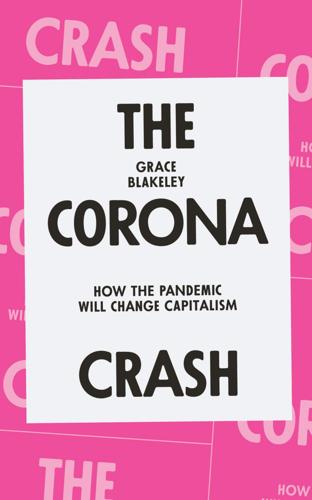
The Corona Crash: How the Pandemic Will Change Capitalism
by
Grace Blakeley
Published 14 Oct 2020
Climate breakdown is accelerating at rates that would render many parts of the planet uninhabitable in just a few short years.10 The past five years have been the warmest years since records began,11 and the twenty warmest years have all occurred over the last twenty-two years.12 With our forests being destroyed and our oceans acidified, it will not be long before we reach a series of tipping points when the effects of climate change will accelerate suddenly and unpredictably, rapidly creating the kind of ‘hothouse earth’ currently the stuff of science fiction.13 Even when assessed on purely economistic grounds, there is a clear case for wide-ranging intervention now to prevent longer-term damage to the economy and the environment. If we are to deal with climate change, trillions of dollars’ worth of fossil fuels will have to stay in the ground, leaving fossil fuel companies with ‘stranded assets’. When one accounts for this issue, equity valuations in the industry look extremely optimistic: some have argued the global economy is facing a carbon bubble worth between $1 trillion and $4 trillion.14 If, on the other hand, those assets are retrieved, we’ll be facing an overlapping environmental, political and economic catastrophe that will create trillions of dollars’ worth of damage anyway.
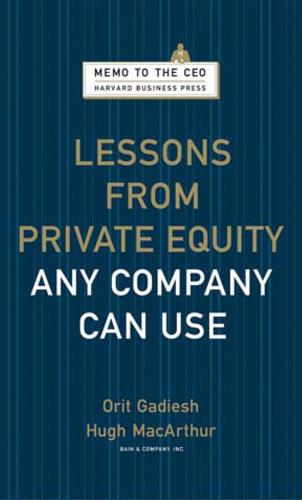
Lessons From Private Equity Any Company Can Use
by
Orit Gadiesh
and
Hugh MacArthur
Published 14 Aug 2008
With increasing scale, scope, and speed, PE firms are assembling portfolios that have turned them into some of the world’s biggest conglomerates. Meanwhile, the kinds of red flags that in the past might have scared off potential PE suitors are losing their power to intimidate. PE firms used to steer clear of stranded assets and labor entanglements, for example, but these issues no longer seem to be the powerful disincentives that they once were. Chrysler’s sale even had the initial support of the autoworkers’ union. “The transaction with Cerberus,” the president of the United Auto Workers (UAW) told the Detroit Free Press, “is in the best interests of our UAW members, the Chrysler Group, and Daimler.”3 The UAW settled a fall 2007 wage dispute with Chrysler within one day.

The Burning Answer: The Solar Revolution: A Quest for Sustainable Power
by
Keith Barnham
Published 7 May 2015
Operation Noah, ‘Faith motivated, science informed, hope inspired’, 10 December 2013, http://www.operationnoah.org/, accessed 21 January 2014. 4. World Development Movement, ‘Carbon Capital’, http://www.wdm.org.uk/carbon-capital, accessed 21 February 2014. 5. Smith School of Enterprise and the Environment, University of Oxford, ‘Stranded assets and the fossil fuel divestment campaign: What does divestment mean for the valuation of fossil fuel assets’, June 2013, http://www.smithschool.ox.ac.uk/research/stranded-assets/SAP-divestment-report-final.pdf. 6. Richard Heede, ‘Tracing Anthropogenic Carbon Dioxide and Methane Emissions to Fossil Fuel and Cement Producers, 1854–2010’, Climatic Change 122, 229–241 (2014). Report can be downloaded from: http://www.climateaccountability.org/publications.html, accessed 22 January 2014. 15.
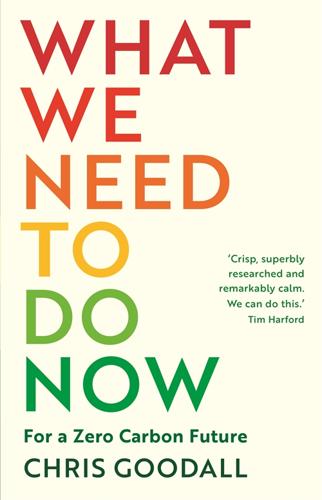
What We Need to Do Now: A Green Deal to Ensure a Habitable Earth
by
Chris Goodall
Published 30 Jan 2020
CLIMATE CHANGE MITIGATION I hugely admire the work of Carbon Brief (www.carbonbrief.org), a website that publishes detailed and insightful analysis of what is going on in the UK and elsewhere in the fields of renewable energy and the science of climate change. Anyone interested in keeping up with new research should also watch Carbon Tracker (www.carbontracker.org), which reports on stranded assets; Energy and Climate Intelligence Unit (www.eciu.net), which covers energy and climate change news; and, from Australia, RenewEconomy (www.reneweconomy.com.au), an exceptional resource for keeping up with events in perhaps the world’s most advanced renewable energy market (despite its pathological continued emphasis on coal).
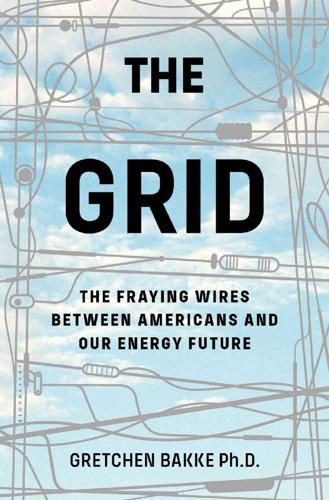
The Grid: The Fraying Wires Between Americans and Our Energy Future
by
Gretchen Bakke
Published 25 Jul 2016
This is what is meant by the utility death spiral: “as grid maintenance costs go up and the capital cost of renewable energy moves down, more customers will be encouraged to leave the grid. In turn that pushes grid costs even higher for the remaining customers, who then have even more incentive to become self-sufficient.” Meanwhile, utilities are stuck with a bunch of stranded assets. Those big, expensive power plants the utilities built throughout the twentieth century aren’t needed much, if at all, anymore. They are still being paid off, however, even if they are largely inactive. Much like all those unfinished nuclear cooling towers that dotted the American landscape in the early 1980s, big fossil fuel power plants, in Germany as in Hawaii or Arizona, stand as a testament to massive investment in the wrong path.
…
France, for example, is all about nuclear; this is part of the reason why France is working on fusion while Germany, which outlawed nuclear after Fukushima, is going toward renewables. investing in a near future defection: Stephen Lacey, “This Is What the Utility Death Spiral Looks Like,” Greentech Media, March 4, 2014, http://www.greentechmedia.com/articles/read/this-is-what-the-utility-death-spiral-looks-like. “with a bunch of stranded assets”: Lacey (2014). they are largely inactive: According to Thomas Kuhn from the Edison Electric Institute, in the United States in 2010, many of our largest power plants were running at 10 to 15 percent of their potential; public presentation, Washington, D. C., September 23, 2009. ways of generating revenue: For the two sides of the story see: Barbara Hollingsworth, “Report: Danger of Government-Created Solar Bubble Bursting When Subsidies Expire in 2016,” CNS News, August 13, 2015, http://www.cnsnews.com/news/article/barbara-hollingsworth/report-danger-government-created-solar-bubble-bursting-when; and Jeff McMahon, “Solar’s Future: Boom, Bust, Boom,” Forbes, November 4, 2015, http://www.forbes.com/sites/jeffmcmahon/2015/11/04/solars-future-boom-bust-boom/.
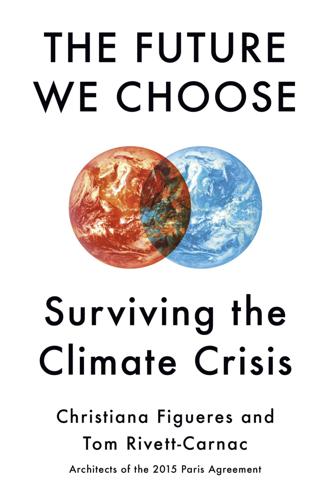
The Future We Choose: Surviving the Climate Crisis
by
Christiana Figueres
and
Tom Rivett-Carnac
Published 25 Feb 2020
For example, Moody’s rating agency (one of the highly influential agencies that assess risks to companies and countries) now has a controlling stake in RiskFirst, a firm that measures the physical risks of climate change.40 Investors are reallocating capital away from what are now commonly known as “stranded assets.” That reallocation is moving markets and catching the attention of corporate leaders, but it needs to go much further, much faster. * * * — Stand up for 100 percent renewable energy. In the past few years, energy generation from renewable sources has undergone an impressive surge.
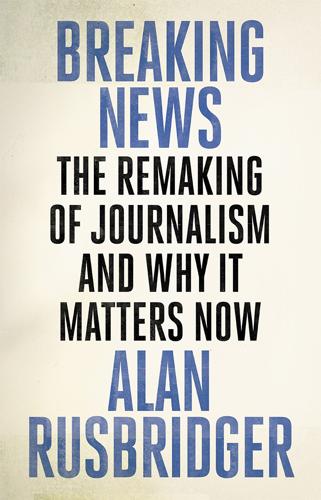
Breaking News: The Remaking of Journalism and Why It Matters Now
by
Alan Rusbridger
Published 14 Oct 2018
We liked McKibben’s very simple framing of the problem in three numbers:35 1) 2 degrees C: the target for the maximum ‘safe’ rise in temperature – a figure which had been endorsed by 167 countries 2) 565 gigatons: the largest amount of carbon dioxide humans could put into the atmosphere by mid-century and still hope to stay within two degrees 3) 2,785 gigatons: the amount of carbon already contained in the proven reserves of fossil fuel companies and stores, i.e. the fossil fuels we’re currently planning to burn. The maths was elementary: the human race could not use anything like the existing reserves of fossil fuels and still hope to preserve life as we knew it. That implied that there were vast stranded assets which could not, in time, possibly be valued as they currently were. The beauty of the figures were that few people contested them. During the course of our subsequent campaign I did a podcast interview with Ben van Beurden, CEO of Shell. Even he did not quarrel with McKibben’s framing of the maths.
…
We gave our content away to any other publisher who wanted to use it – vastly extending the 3.5 million people who had read the material on our own website. We commissioned poems. Famous actors, including Jeremy Irons, Gabriel Byrne, Maxine Peake and Michael Sheen, volunteered to record them for free. We held events, we sold t-shirts. We were making a two-pronged argument. One was ethical (think tobacco, arms, apartheid); the other financial (stranded assets). Slightly to our surprise, the Prince of Wales endorsed the ‘clear, compelling’ campaign. Even more unexpectedly, the second prong seemed to land more effectively than the first. The governor of the Bank of England, Mark Carney, went on BBC News using Bill McKibben’s three numbers to wave a large red flag at financial institutions, warning them of the long-term value of investments in carbon-related stocks.
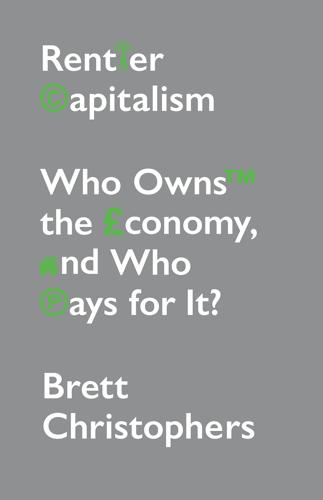
Rentier Capitalism: Who Owns the Economy, and Who Pays for It?
by
Brett Christophers
Published 17 Nov 2020
McCright, ‘Organized Climate Change Denial’, in J. S. Dryzek, R. B. Norgaard and D. Schlosberg, eds, The Oxford Handbook of Climate Change and Society (Oxford: Oxford University Press, 2011), pp. 144–60. 94. See, for example, M. Cranny, ‘BP Rejects Concern Over Stranded Assets Amid “Slow” Energy Shift’, 20 February 2018, at bloomberg.com; D. Zhdannikov, ‘Shell Sees No Risk of “Stranded Assets” as Reserve Life Shrinks’, 12 April 2018, at reuters. com. 95. Cited in A. Juhasz, ‘Big Oil’s Big Lies about Alternative Energy’, 25 June 2013, at rollingstone.com. 96. T. Macalister, ‘BP Dropped Green Energy Projects Worth Billions to Focus on Fossil Fuels’, Guardian, 16 April 2015. 97.
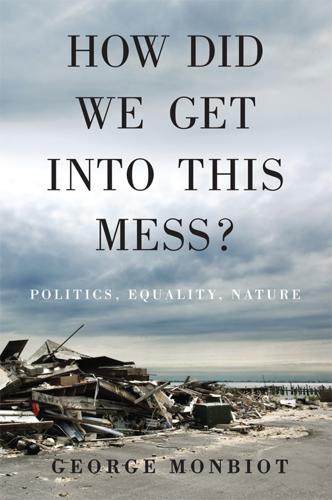
How Did We Get Into This Mess?: Politics, Equality, Nature
by
George Monbiot
Published 14 Apr 2016
He warned that if climate change policies meant that fossil fuel reserves could no longer be exploited, pension funds could be investing in ‘the sub-prime assets of the future’.8 Echoing the Bank of England and financial analysts such as the Carbon Tracker Initiative, Mr Davey suggested that if governments were serious about preventing climate breakdown, fossil fuel could become a stranded asset. This provoked a furious response from the industry. The head of Oil and Gas UK wrote to express his confusion, pointing out that Mr Davey’s statements came ‘at a time when you, your Department and the Treasury are putting great effort into [making] the UK North Sea more attractive to investors in oil and gas, not less.

Peers Inc: How People and Platforms Are Inventing the Collaborative Economy and Reinventing Capitalism
by
Robin Chase
Published 14 May 2015
In December 2012, 350.org launched its divestiture campaign, encouraging universities and other institutions to excise fossil fuel companies from their investment portfolios; this has brought about even more debate and soul-searching, as well as divestment, among wealthy individuals, universities, foundations, companies, counties, cities, religious institutions, and the press.15 In response to the new demand, financial institutions are creating new index funds and new metrics are being discussed. The whole idea of “stranded assets”—fossil-fuel assets that are counted on company balance sheets but which may prove to be worthless—stems from 350.org’s divestment push. Remember, 350.org raises the issue, provides the fact sheets, and tracks progress, but it is the participating peers at universities and in boardrooms across the country and around the world who are carrying out the discussions.
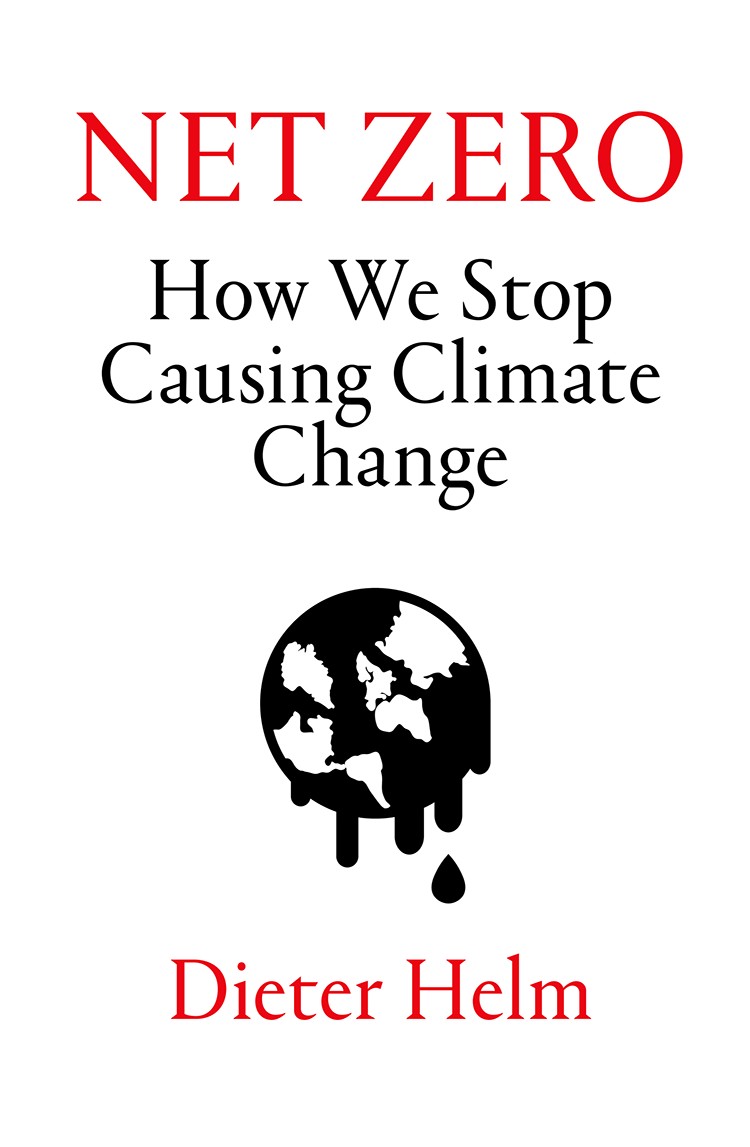
Net Zero: How We Stop Causing Climate Change
by
Dieter Helm
Published 2 Sep 2020
It is those evil oil and gas companies and the coal mining corporations. With one more big heave, encouraged by global demonstrations, increasingly demanding targets will be pledged by the main polluters and the global fossil fuel industry will be pushed towards oblivion as investors flee from their stranded assets. We can sail off into a new prosperity of a low-carbon transition, towards a net zero world. If we all declare a ‘climate emergency’ and sign up to net zero, all will be well, or at least a lot less bad. To see why this is not going to crack climate change, the key thing to realise is that this is looking down the wrong end of the telescope.

Stakeholder Capitalism: A Global Economy That Works for Progress, People and Planet
by
Klaus Schwab
Published 7 Jan 2021
But change is underway. Increasingly, large institutional investors in the US and Europe are turning away from companies that operate coal plants. They are pressured by activists and clients that demand it from them, or simply following rational concerns that fossil fuel plants will eventually become stranded assets, as former Bank of England governor Mark Carney has warned.38 And entrepreneurs and governments in India and China are starting to take action toward a carbon-light future as well, attracted by the improving affordability of cleantech versus fossil-fuel technologies. In this regard, the World Economic Forum is taking action as well.

Stakeholder Capitalism: A Global Economy That Works for Progress, People and Planet
by
Klaus Schwab
and
Peter Vanham
Published 27 Jan 2021
But change is underway. Increasingly, large institutional investors in the US and Europe are turning away from companies that operate coal plants. They are pressured by activists and clients that demand it from them, or simply following rational concerns that fossil fuel plants will eventually become stranded assets, as former Bank of England governor Mark Carney has warned.38 And entrepreneurs and governments in India and China are starting to take action toward a carbon-light future as well, attracted by the improving affordability of cleantech versus fossil-fuel technologies. In this regard, the World Economic Forum is taking action as well.
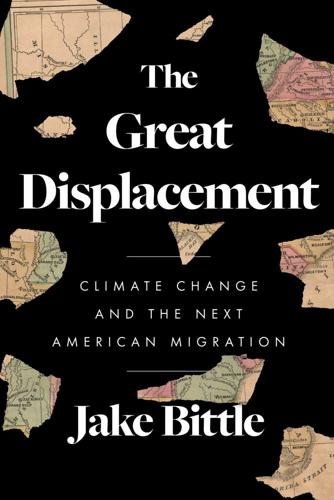
The Great Displacement: Climate Change and the Next American Migration
by
Jake Bittle
Published 21 Feb 2023
The Norfolk area nonprofit Wetlands Watch has put together a proposal that would leverage private money to bail out homeowners: the city will only allow real estate developers to build on high ground if they first purchase a few homes from mortgage holders in areas like Larchmont, allowing those homeowners to make a clean escape. The developers will then flip the homes into a land trust, and when the occupants move out, the city will clear the land. All these proposals are more cost-effective than FEMA-funded buyouts, and could help rescue homeowners with stranded assets. The big uncertainty, says Siders, is whether there will be political will to enact them on a large scale. “It raises this question of, who do we put the onus on?” asked Siders. “Is the burden on the government to fix it afterwards, or the homeowner, or the developer? There’s all these places we could put the burden, and it’s not totally clear where it should be.”
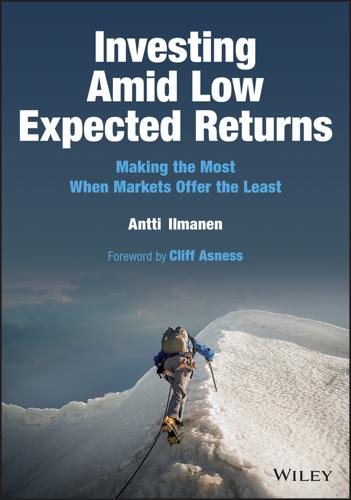
Investing Amid Low Expected Returns: Making the Most When Markets Offer the Least
by
Antti Ilmanen
Published 24 Feb 2022
The logic is that we are in the early innings of a transition phase where pro-ESG (“green”) firm stocks will keep improving growth prospects and valuations while anti-ESG (“brown”) firm stocks will keep declining.3 Investors who underestimate the bad consequences for brown companies (regulatory costs, stranded assets, etc.) and other ESG sinners are behind the curve and will get their just deserts and underperform ESG-oriented investors. The finance textbook argument is that constraints cannot help and that adding non-financial considerations in the utility function must imply some trade-off with financially optimal holdings.
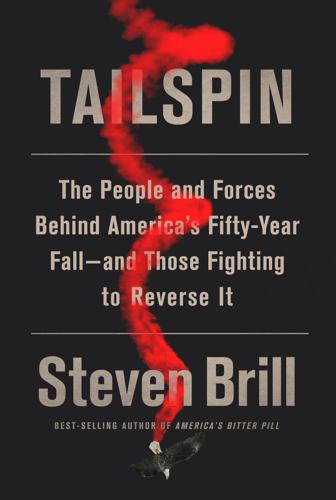
Tailspin: The People and Forces Behind America's Fifty-Year Fall--And Those Fighting to Reverse It
by
Steven Brill
Published 28 May 2018
“But I think that is changing, and my hope is that over the next five or ten years, that will be 50 percent. I think they will understand that if you’re thinking about the long term, you have to invest in companies that worry about winning the trust of their customers, having a healthy talent pipeline, and, yes, think about long-term issues like climate so that they don’t end up with stranded assets.” In 2017, for the first time, McKinsey’s annual guide to “Measuring and Managing the Value of Companies” devoted an opening chapter to attacking short-termism, declaring, “Creating shareholder value is not the same as maximizing short-term profits.” What followed was a practical argument, backed by numbers, examples, and graphs, that shareholders are better off if denied short-term sugar highs.

Radical Uncertainty: Decision-Making for an Unknowable Future
by
Mervyn King
and
John Kay
Published 5 Mar 2020
Marion King Hubbert, an American geologist, popularised the notion of ‘peak oil’; in the 1950s he predicted that US oil production would reach an unsustainable peak in 1965 and that the similar peak in global output would occur in around 2000. 7 America did encounter peak oil in 1970 – domestic output subsequently fell; but thanks to shale the peak in US oil production was at the time of writing experienced in 2018 and is expected to be higher in 2019. 8 World petroleum output in 2000 was about twice the level Hubbert anticipated and has continued to grow. Gloomy prognosticators today no longer suggest that the world will run out of oil but that the rejection of fossil fuels will lead to large and once valuable oil and coal reserves remaining forever in the ground – ‘stranded assets’. ‘The Limits to Growth’, a 1972 publication commissioned by the Club of Rome, an international group of environmentally concerned individuals, asserted that economic growth must end within the next century because of constraints on all kinds of mineral resources. Thirty million copies were sold. 9 In fairness, we would have to acknowledge that they have another fifty years to be proved right.
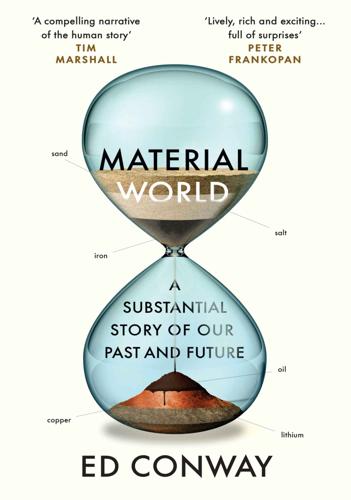
Material World: A Substantial Story of Our Past and Future
by
Ed Conway
Published 15 Jun 2023
Given it is these stories people most associate with oil refiners – stories of pollution, if not from lead then from benzene or other toxins produced in these sites – perhaps it’s no surprise they have become so unfashionable. Even the oil majors are selling off many of their refineries in the face of a new trend for electric cars and a hydrogen alternative. The conventional wisdom is that places like this will become ‘stranded assets’, left behind when the world moves on. But there is an alternative vision being conjured up by places like Wesseling. Having ended the war a tangled wreckage, this place was reinvented to refine oil rather than coal. Wesseling rebuilt its pipes and cylinders on top of the old, confusing footprint.
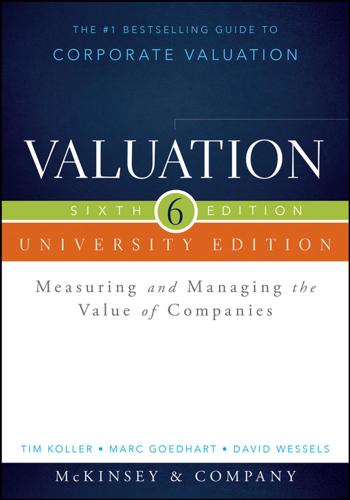
Valuation: Measuring and Managing the Value of Companies
by
Tim Koller
,
McKinsey
,
Company Inc.
,
Marc Goedhart
,
David Wessels
,
Barbara Schwimmer
and
Franziska Manoury
Published 16 Aug 2015
In 2014, heirs to the Rockefeller Standard Oil fortune decided to join Stanford University’s board of trustees in avoiding shares in coal companies. Long-term-oriented companies must be attuned to long-term changes that will be demanded by both investors and governments, so they can adjust their strategies over a 5-, 10-, or 20-year time horizon and reduce the risk of stranded assets, or those that are still productive but not in use because of environmental or other issues. For any company, the complexity of addressing universal social issues like climate change poses an unresolved question: if the task does not fall to the individual company, then to whom does it fall? Some might argue that it would be better for the government to develop incentives, regulations, and taxes.